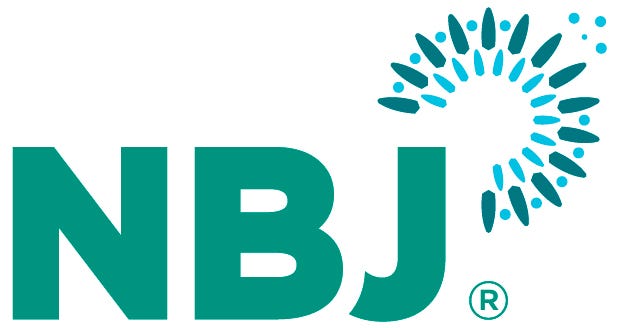
This article originally appeared in the Nutrition Business Journal Ingredient Science and Innovation Issue.
Anti-aging is so last century, and now beauty-from-within has morphed into mood-from-without. As the cosmetics industry embraces holistic solutions and mind-body connection, neurocosmetics—aka mood-lifting cosmetics—is the hot new kid on the block. And supplements are poised to get in the game.
“It’s a pretty new field that has been generating a lot of interest over the past year,” says Mark Broussard, a chemist and compliance expert at the Desert In Bloom cosmetics lab who is developing neurocosmetics products. “Ingredient availability has been there for a couple of years, but it’s been kind of a slow build for companies to include neurocosmetics ingredients in their products. Look for that to increase substantially over the next two to three years.”
“The rise of neurocosmetics is not just a passing trend,” says Roshini Sanah Jaiswal, CEO and founder of the neurocosmetics line Justhuman. “It’s a paradigm shift in the beauty industry.”
Based on mediator-receptor interactions between the skin and the nervous system, neurocosmetics is an evolution of pharmaceutical practices that leverage neuropeptides to influence skin health and repair, Jaiswal explains. In addition to neuropeptides, Justhuman formulations include probiotics, prebiotics and postbiotics to nourish the skin microbiome and GABA to induce calm feelings in the brain and soothe sensitive skin.
“The convergence of neuroscience, dermatology and cosmetic chemistry is opening up new possibilities for products that not only address cosmetic concerns like aging and sensitivity but also provide psychological and emotional benefits,” Jaiswal says. “Our approach is to combine neuropeptides and adaptogens with other cutting-edge ingredients to create formulations that go beyond traditional health care.”
Skin care meets neuroscience
The basic premise behind neurocosmetics is that the skin is an extension of the central nervous system, and, therefore, some skin problems are the result of psychological discomfort. Medical scientists have been studying the relationship between the psyche and the nervous, endocrine and immune systems since the early 2000s. Over the past couple years, product developers have been utilizing this research to create bioactive topical products made from ingredients such as peptides, adaptogenic herbs, amino acids, ceramides and antioxidants that are designed to work at a neurological level, improving not only the epidermis but also mood and well-being.
“So-called neurocosmetics or neuroactives can affect how the brain responds to topical treatment,” says Franziska Wandrey, head of research for Switzerland-based Mibelle Group Biochemistry, a leading developer of neurocosmetic ingredients. “Our skin is basically an extension of the brain, as both the skin and the brain are interconnected by nerves and neuronal cells.”
Esthetician Amy Wall, founder of Higher Self Beauty, describes neurocosmetics as “an exciting intersection between skincare and neuroscience—a profound shift in how we approach skin health, recognizing the deep connection between our emotional state, brain, nervous system and skin. Neurocosmetics is really the science of topical ingredients that work on the neurotransmitters inside of the skin and that can activate chemicals like dopamine, serotonin and all the other feel-good chemicals.”
If supplements sound like a ripe offshoot, they certainly are. Broussard says Desert In Bloom is about to finish up creating a line of topicals for one of its clients and then will move on to developing supplements for the brand.
Mibelle—which made its name in the neurocosmetics field with Happybelle-PE, designed to increase collagen production in the skin and protect skin from both psychological and external stresses—is also utilizing plant sources for oral applications, Wandrey says. “As we at Mibelle Biochemistry develop ingredients for the cosmetic as well as for the food supplement industry, we try to use synergies and utilize the plant sources for topical as well as oral applications, if possible.”
Mibelle’s newest ingredient, timut pepper-based SaraPEPP Nu, is made specifically for dietary supplements. “With SaraPEPP Nu, we stayed in the realm of neuronal protection and could show, in different studies, that oral intake improves brain neuronal activity, working memory and overall cognitive function and stress resistance,” Wandrey says.
Where’s the science?
All of these are big claims. And as with most emerging fields, neurocosmetics still lacks a substantial body of research to back them up.
“We are still very much in the early stages, and certainly the scientific evidence and research really needs to come forward,” says R&D expert Raphaelle O’Connor, director of health and nutrition consultancy inewtrition. “We are really looking for a combination of social science, data science and life science to work together in order to understand the mechanism in which these molecules can work.”
Wandrey says Mibelle has performed in vitro and clinical studies to demonstrate mechanisms of action as well as efficacy for its products, and Jaiswal says there is plenty of research highlighting the skin-brain connection and its impact on overall well-being to support the conceptual framework for neurocosmetics. But for the most part, science remains scarce.
Wall is concerned that brands looking to capitalize on emerging interest will “fairy dust” with ingredients associated with neurocosmetics or won’t include a delivery mechanism, such as a peptide, that will allow topical products to penetrate the skin. “A lot of times, they’re just grabbing an ingredient that will qualify to be a neurocosmetic and slapping it into their formula, and they’re getting into the trend that way,” she says.
Living up to the hype
In its 2024 beauty trends report, global market research agency Mintel said neurocosmetics is gaining traction with consumers around the world. In the U.S., one-third of consumers are willing to pay more for beauty and personal care products that have mood-boosting qualities, Mintel found.
And as with any emerging trend, there is a very real danger that the hype could be its demise.
Consumers won’t heed neuroscience’s claims without proof of efficacy, O’Connor points out. “It is becoming very clear now that consumers are very savvy. They are informed, they are looking for value and they are willing to educate themselves,” she says. “So, we have seen some growth, but it has kind of plateaued. I think some companies have lost trust because they haven’t invested resources to support the category.”
Broussard says neurocosmetic ingredients operate at a localized level on the skin, reducing inflammation, irritation and itching by inhibiting production of pro-inflammatory compounds and stimulating skin cells to release feel-good neurotransmitters such as dopamine, oxytocin, GABA and B-endorphins. But they won’t have a systemic effect, he adds, and he worries that some neurocosmetics marketers are suggesting they will. He doesn’t want to see neurocosmetics go the way of CBD, which couldn’t live up to marketing promises it was never meant to deliver.
“Marketers are not going to be able to help themselves,” Broussard says. “They’re going to promote an overall sense of well-being, they’re going to say your relationships are going to be better and you’re going to be more satisfied with your life and everything else. And if you go too heavy on the well-being angle, people will say, ‘Gee, I’m using this cream, but guess what? I still don’t like my husband that much. It hasn’t helped.’ You’re setting yourself up for failure by building up expectations that the product is not designed to deliver and will not deliver.”
Amina Mire, a sociologist at Carleton University in Ottawa, Ontario, Canada, who studies messaging around women’s aging and wellness, takes it a step further. Mire believes the entire field of neurocosmetics is coopting scientific language to target aging women who are vulnerable to such messages. “There is no cosmetic cure for neurological issues, so that is that,” she says. “Neurocosmetics is a blatant marketing gimmick, and I am very surprised the FDA has not stepped in to shut it down.”
Mire is concerned that people with mental health issues could turn to neurocosmetics instead of seeking the medical help they need “because there are social media influencers who say, ‘Look, I consume this and look, I feel better.’ It creates both a false hope and a desire to consume more, and I feel this is a trend that needs to be quashed before it takes deep roots because it undermines proper health care.”
Subscribe today to the Nutrition Business Journal.
About the Author
You May Also Like




.png?width=700&auto=webp&quality=80&disable=upscale)

